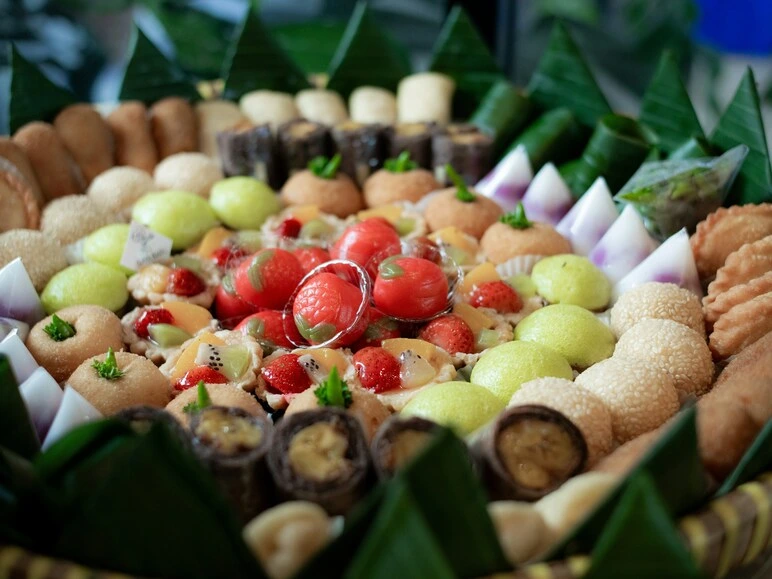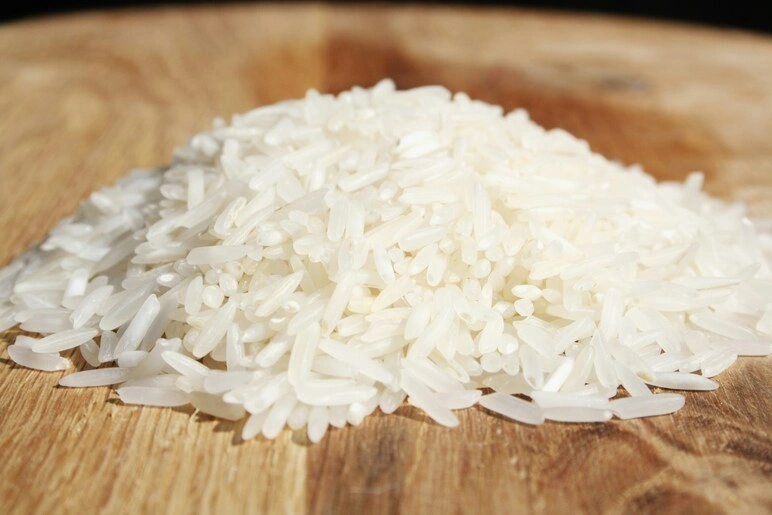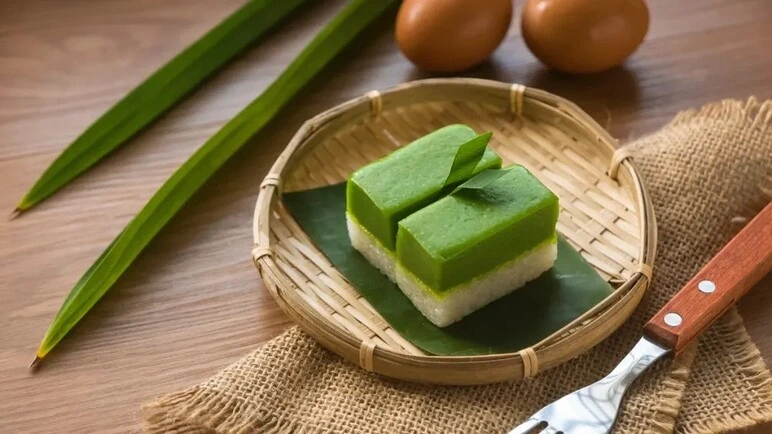
When we discuss Indonesia’s culinary heritage, rendang normally conjures up. There’s nothing more evident than in Indonesian traditional snacks, or jajanan pasar. Found in bustling markets, roadside stalls, and neighbourhood warungs, these sweet and savoury bites carry generations of stories, flavours, and regional ingredients that define the nation’s palate.
Before we drool over the traditional snacks, let’s dive into the ingredients first. If you’ve never seen or eaten any snack before, you might be overwhelmed by its facade. Yet, we should never judge a book by its cover — nor shall we judge a snack!
Ingredients in Indonesian traditional snacks
Traditional snacks are deeply rooted in the land, as each island’s climate and agriculture shape what ends up on the plate. Those coconut groves in Sulawesi and fertile rice fields in Java? They’re abundant sources to evoke zest to the snacks; they also tell the story of where they come from and how local communities use them. Not to forget are culture and sustainability beaming behind these delectables.
Banana and pandan leaves
Bananas and pandan grow abundantly in Indonesia’s humid lowlands. Slices of ripe banana can be wrapped in banana leaves with rice flour and coconut milk, then steamed to infuse an earthy aroma. Pandan leaves, meanwhile, are used both as a natural green dye and for their floral fragrance in desserts.
Cassava and sweet potatoes
Root crops like cassava and sweet potatoes thrive in Indonesia’s tropical soil, particularly in Central Java and East Nusa Tenggara. These humble ingredients were actually once considered peasant food. Cassava, or singkong, can be mashed and sweetened, while sweet potatoes lend their earthy sweetness.
Coconut and palm sugar
Coconuts are a cornerstone of Indonesian sweets. Grated coconut adds texture and richness to treats, while santan (thick coconut milk) gives creamy depth. Palm sugar, or gula jawa, made from coconut or aren palm sap, is the natural sweetener of choice — its smoky caramel flavour defines desserts.
Glutinous rice and rice flour
Indonesia’s staple crop appears in many forms. In Java and Sumatra, glutinous rice is steamed, pressed, or ground into flour to make chewy, sticky delicacies. Rice flour also forms the base of soft, steamed cakes, providing a light, tender texture.

Local spices and herbs
Even sweet snacks carry the subtle touch of Indonesian spices. Daun pandan (pandan leaf), daun suji (screwpine leaf), and daun salam (Indonesian bay leaf) lend fragrance, while cinnamon, vanilla, and clove add warmth. In savoury treats, you’ll find ingredients that reflect Java’s rich spice trade history, such as galangal, lemongrass, and shallots.
Sesame and mung beans
Influences from early Chinese settlers introduced ingredients like sesame and mung beans, now fully integrated into Indonesian snack culture. Glutinous rice dough can be coated in sesame seeds, filled with sweet mung bean paste. These ingredients thrive in Java’s warm climate, bridging Indonesia’s diverse culinary influences.
Tapioca and sago starch
In West Java, tapioca flour — locally known as aci — is used to make chewy, stretchy snacks. Moreover, in eastern Indonesia, particularly Maluku and Papua, sago starch replaces rice as the main carbohydrate and finds its way into local variations of steamed cakes and fritters.
Indonesian traditional snacks to nibble
Traditional snacks are best enjoyed the way locals do — warm from the steamer or freshly fried, preferably paired with tea or kopi tubruk (strong, unfiltered coffee). They’re eaten throughout the day: as breakfast, mid-morning snacks, or evening treats after a long day. Each bite connects you to a region’s soil, its farmers, and the timeless rhythm of Indonesian life. Here’s a closer look at some of the country’s most beloved traditional treats.
Arem-Arem
The rice roll is filled with seasoned vegetables, chicken, or tempeh, wrapped in banana leaves and then steamed, popular as a breakfast or travel snack for a savoury option.
Dadar Gulung
A bright green rolled pancake is filled with sweet grated coconut and palm sugar. The pandan-infused crepe provides a fragrant wrapper for the caramel-like filling.
Gemblong
A classic from Betawi (Jakarta’s native culture), glutinous rice flour is fried until golden, then coated in melted palm sugar, oozing a sticky and crunchy texture.
Getuk
From Central Java, this boiled cassava is mashed with sugar and topped with grated coconut. Sometimes dyed in cheerful pastel colours, it’s both nostalgic and hearty.
Klepon
The bite-sized glutinous rice balls are filled with molten palm sugar (gula jawa) and rolled in grated coconut. The moment you bite in, the sugar bursts!
Kue Cubit
Translating to “pinch cake,” this street favourite in urban areas like Jakarta sources flour, sugar, and milk, which are cooked halfway through for a gooey centre. Modern versions come topped with chocolate sprinkles or matcha powder.
Kue Lumpur
Soft, creamy, and lightly sweet, a mix of mashed potatoes, coconut milk, flour, eggs, and sugar has a silky texture and is topped with raisins or slices of young coconut.
Kue Talam
The two-layered steamed cake with a coconut milk top and rice flour base has the perfect balance of creamy and chewy textures. Depending on the region, the lower layer might be flavoured with pandan, sweet potato, or palm sugar for a delightful variety.

Lemper
A rice-based delicacy is this sticky glutinous rice filled with seasoned shredded chicken or fish, wrapped neatly in banana leaves, features a subtle coconut milk aroma and smoky undertones from the grilling process.
Lupis
Sticky and glistening with palm sugar syrup, this glutinous rice cake is shaped into triangles and rolled in grated coconut, typically served during traditional ceremonies in Java to represent unity and harmony.
Nagasari
Made from rice flour, coconut milk, and banana slices, the snack’s creamy batter and sweet banana are wrapped in banana leaves and steamed until soft and fragrant.
Onde-Onde
Thanks to the Chinese influence, these golden sesame balls, filled with sweet mung bean paste, come about as being crispy on the outside and chewy within. Snag them in markets across Java and Sumatra.
Putu Ayu
This pretty, flower-shaped steamed cake combines pandan juice for its green hue with grated coconut and soft, airy flour for a fragrant aroma and delicate sweetness.
Serabi
The traditional Javanese version of pancakes uses rice flour and coconut milk cooked in clay moulds, topped with palm sugar syrup or savoury oncom (fermented soybean).




 Mirella Pandjaitan
Mirella Pandjaitan
 Dec 03, 2025
Dec 03, 2025